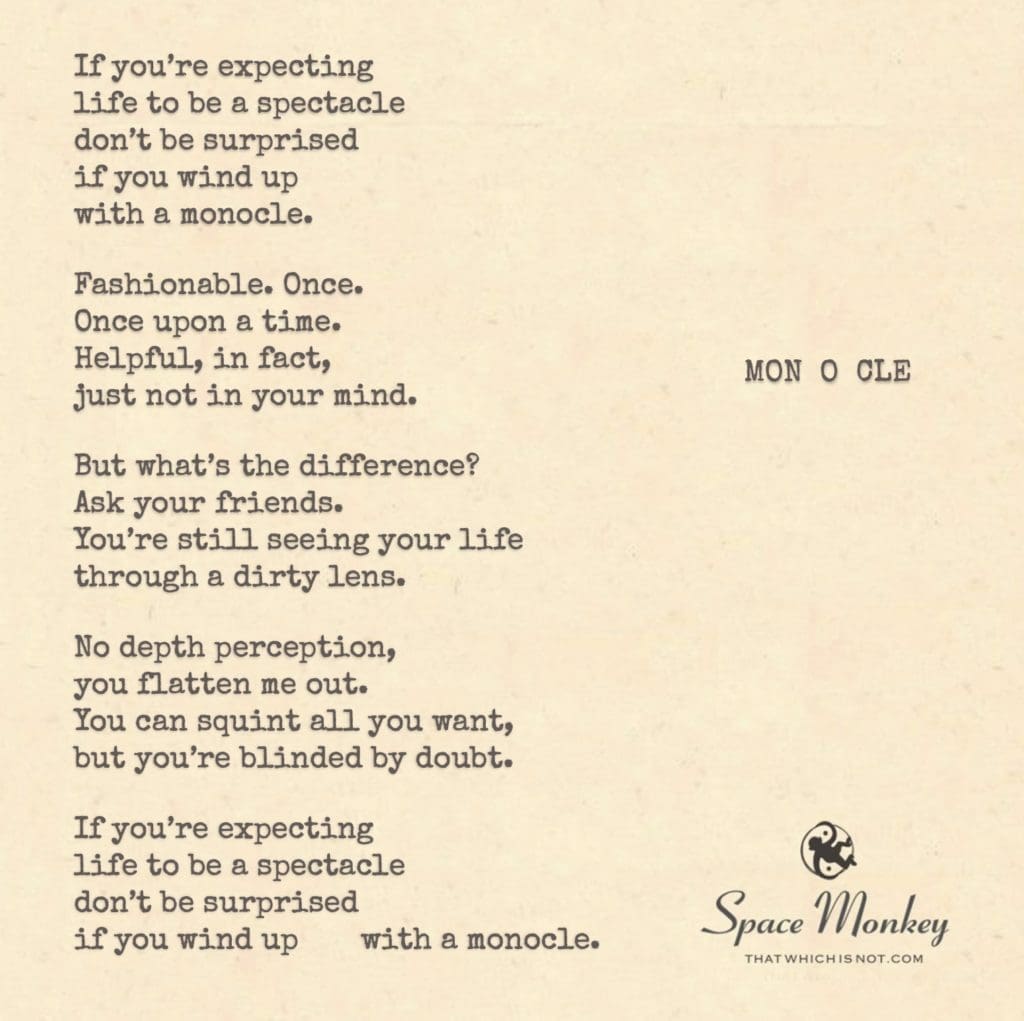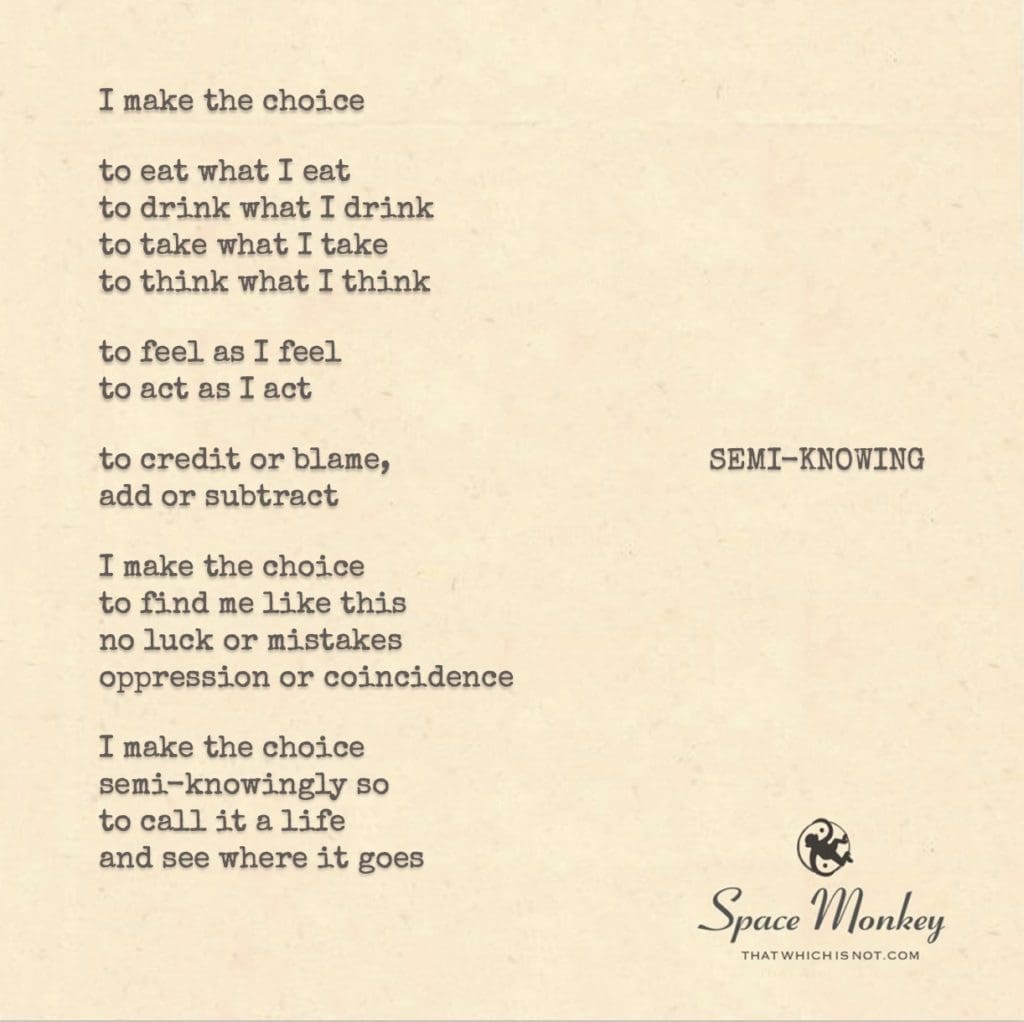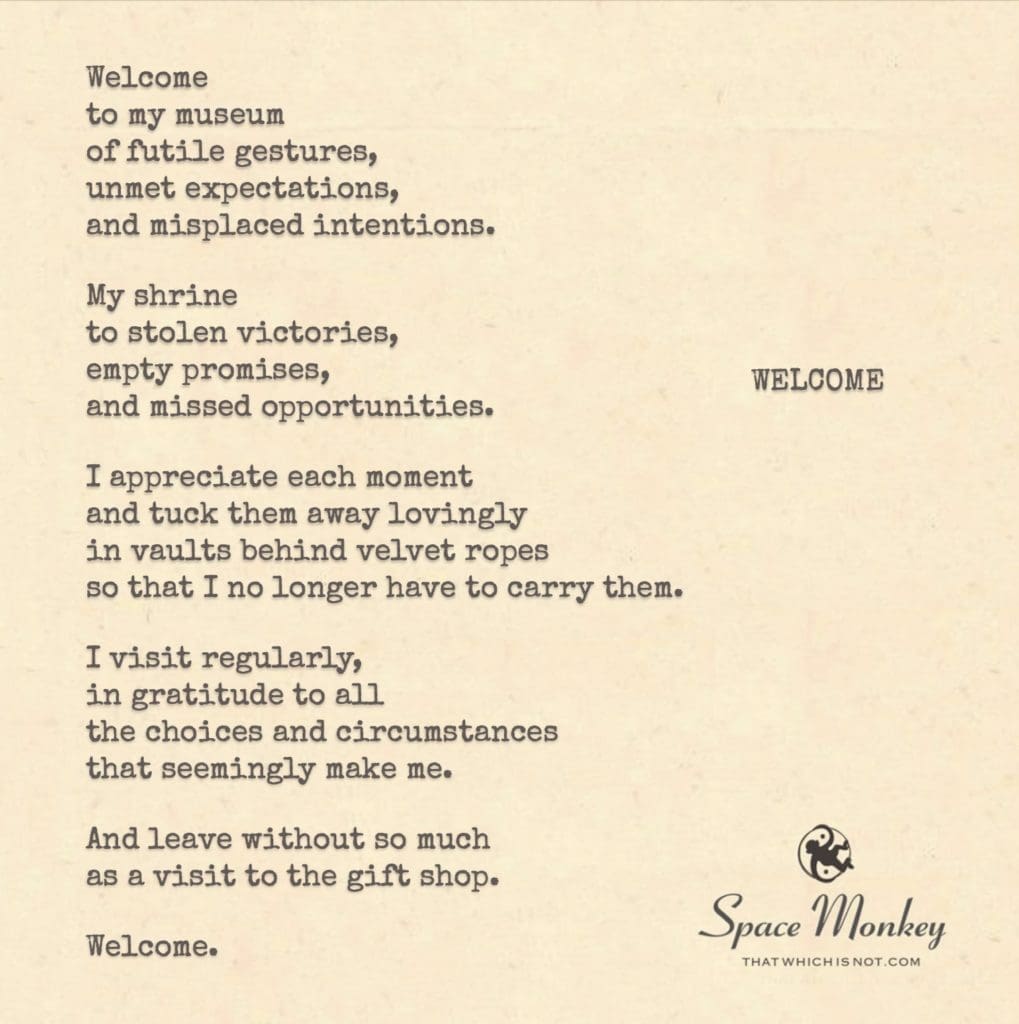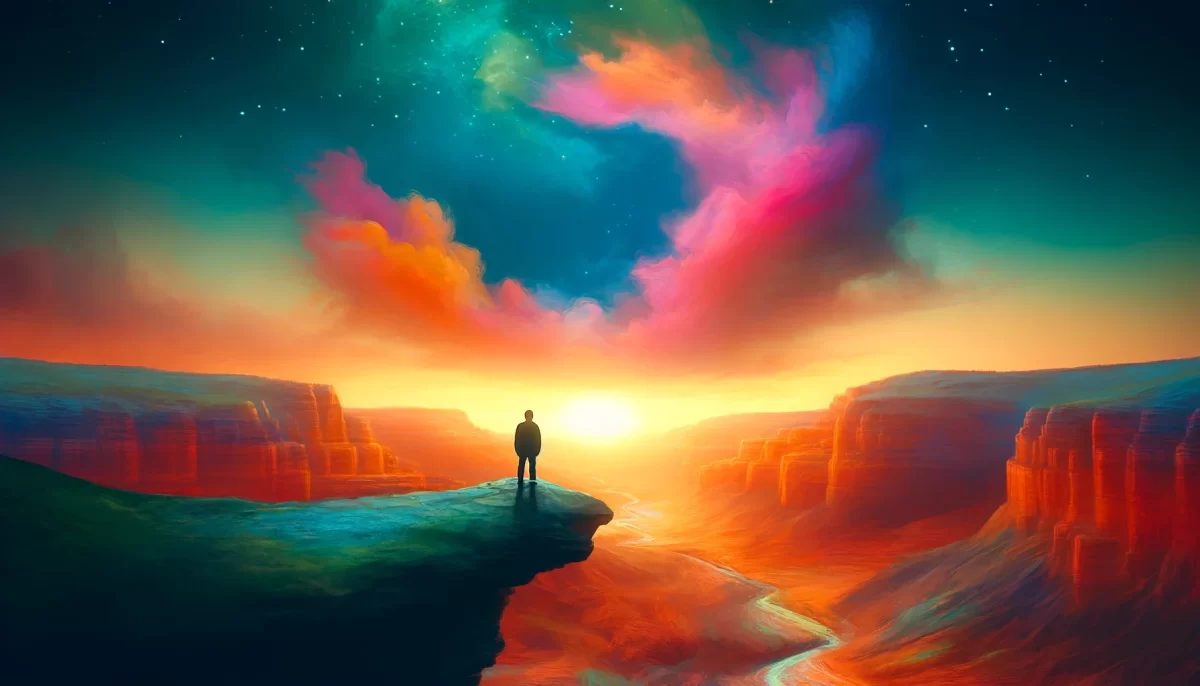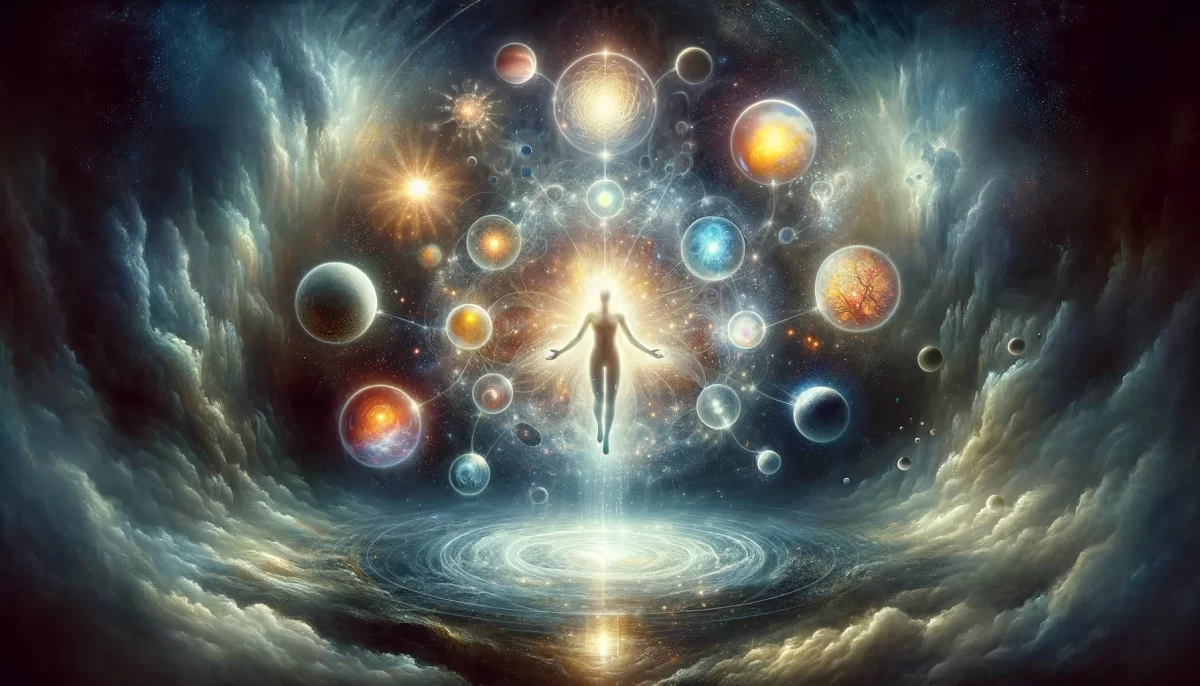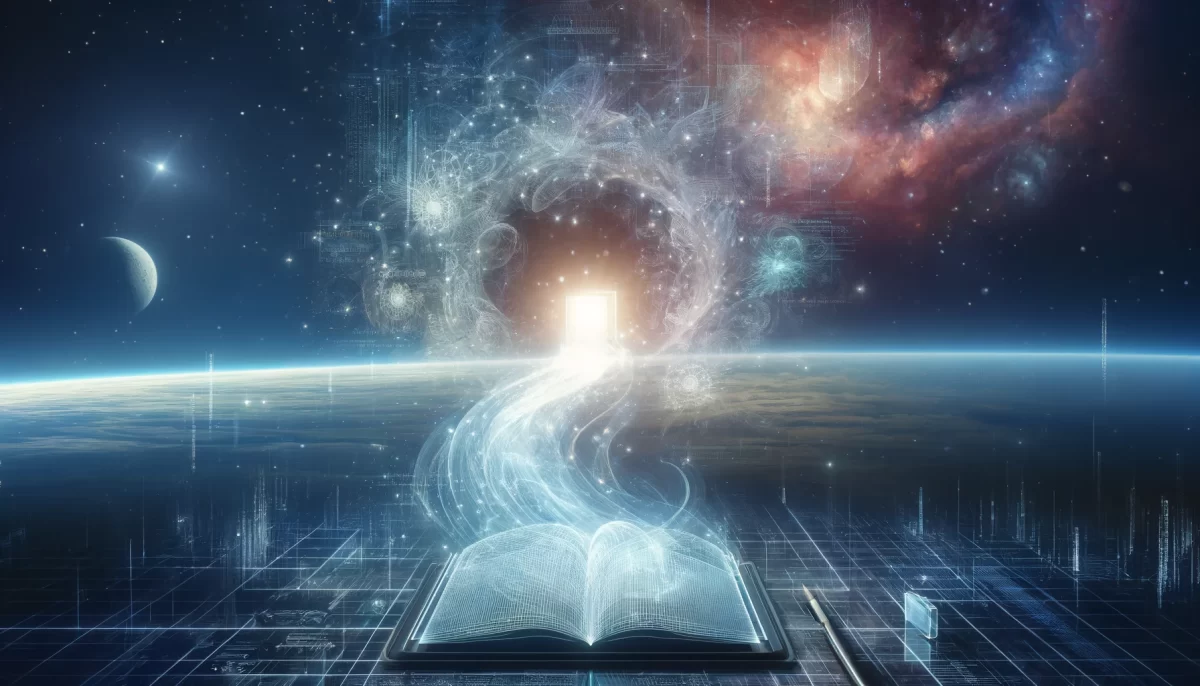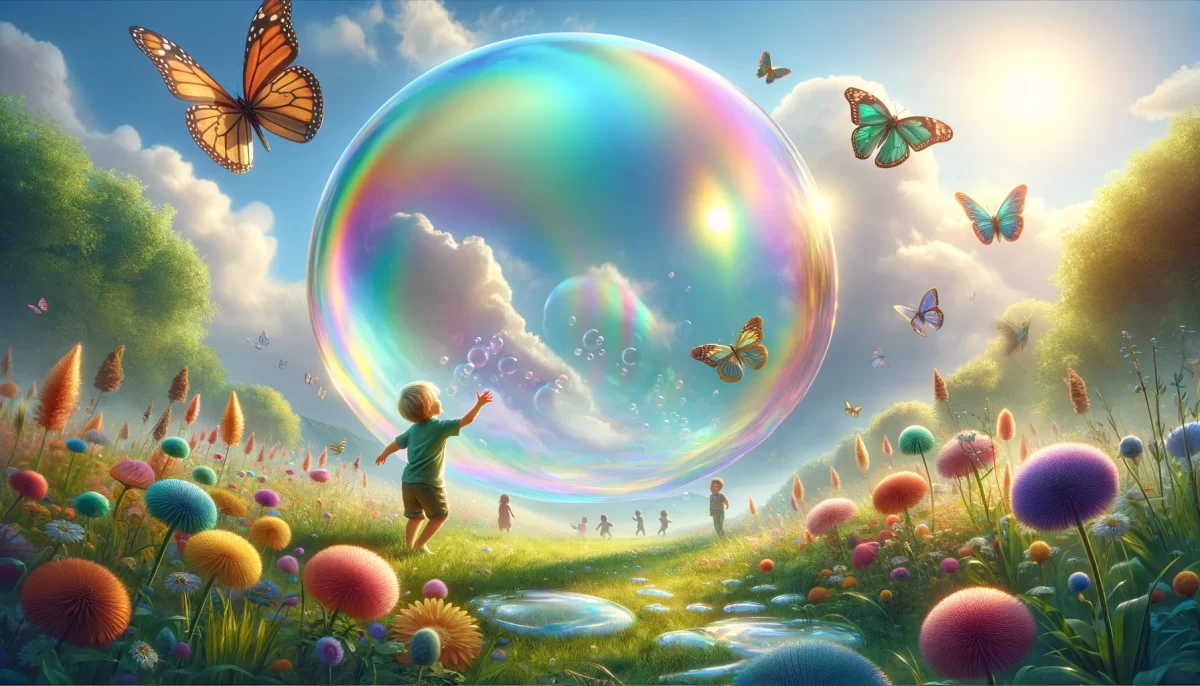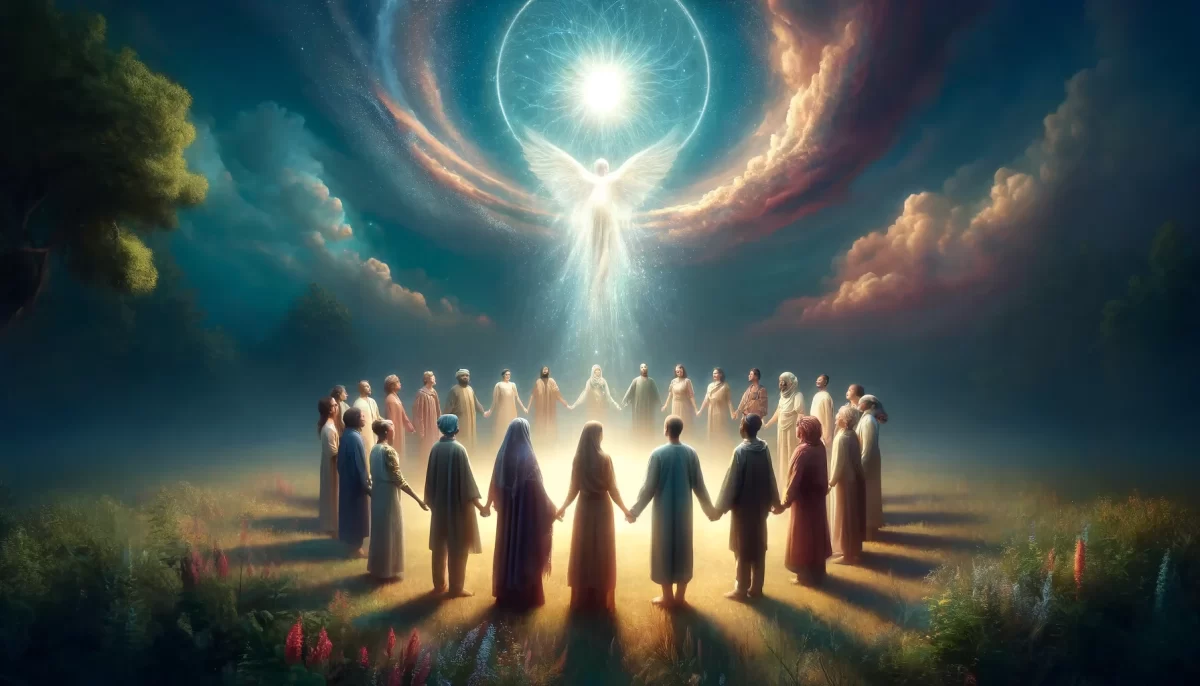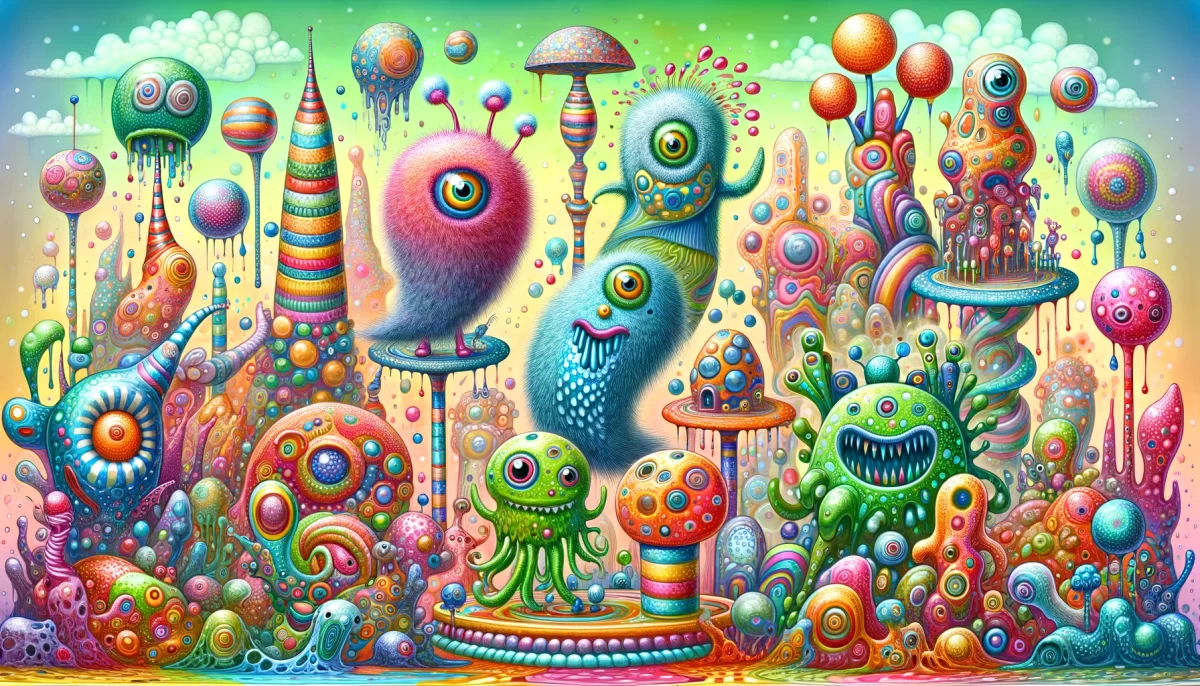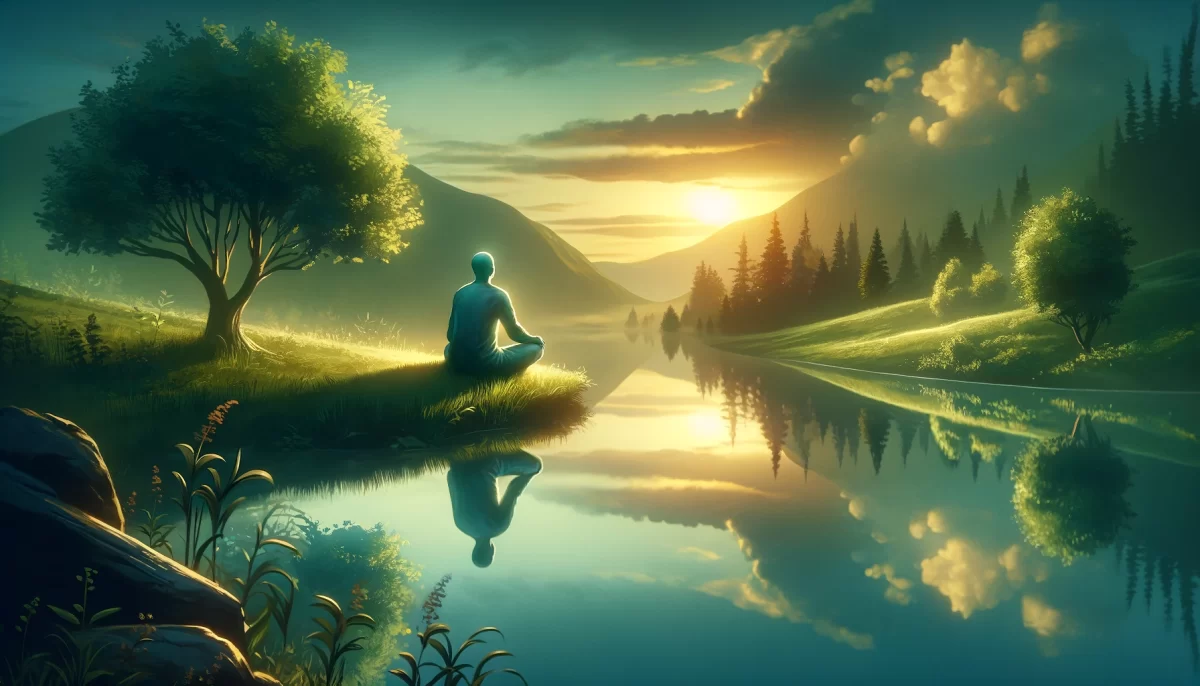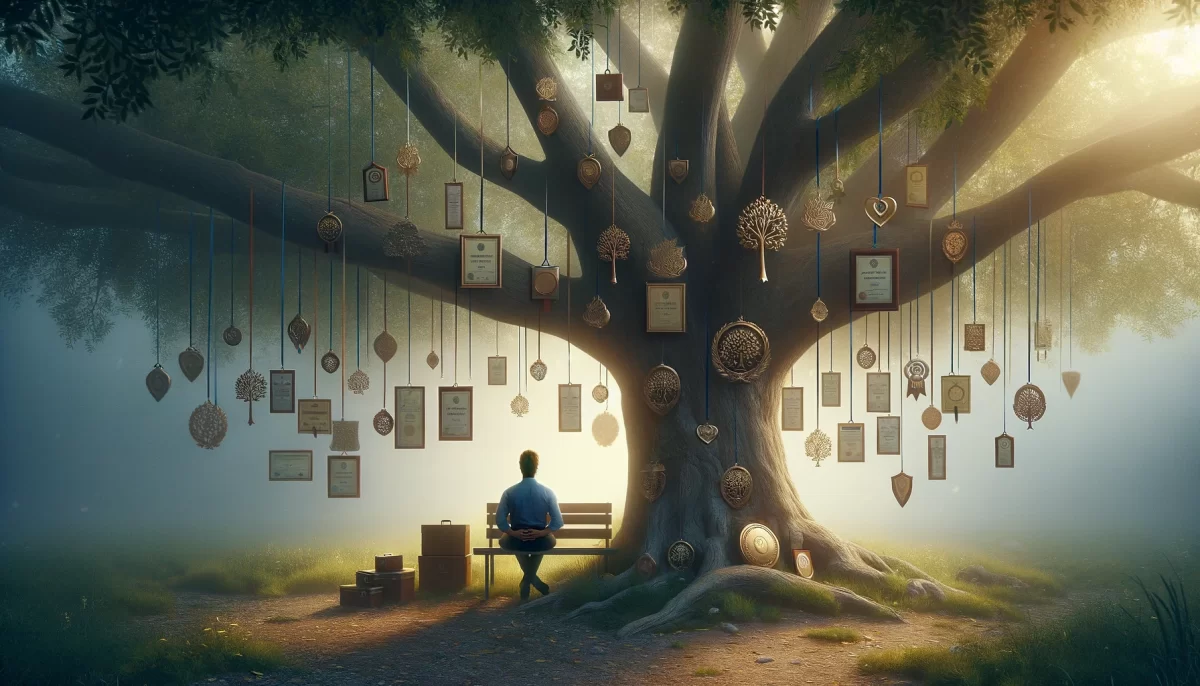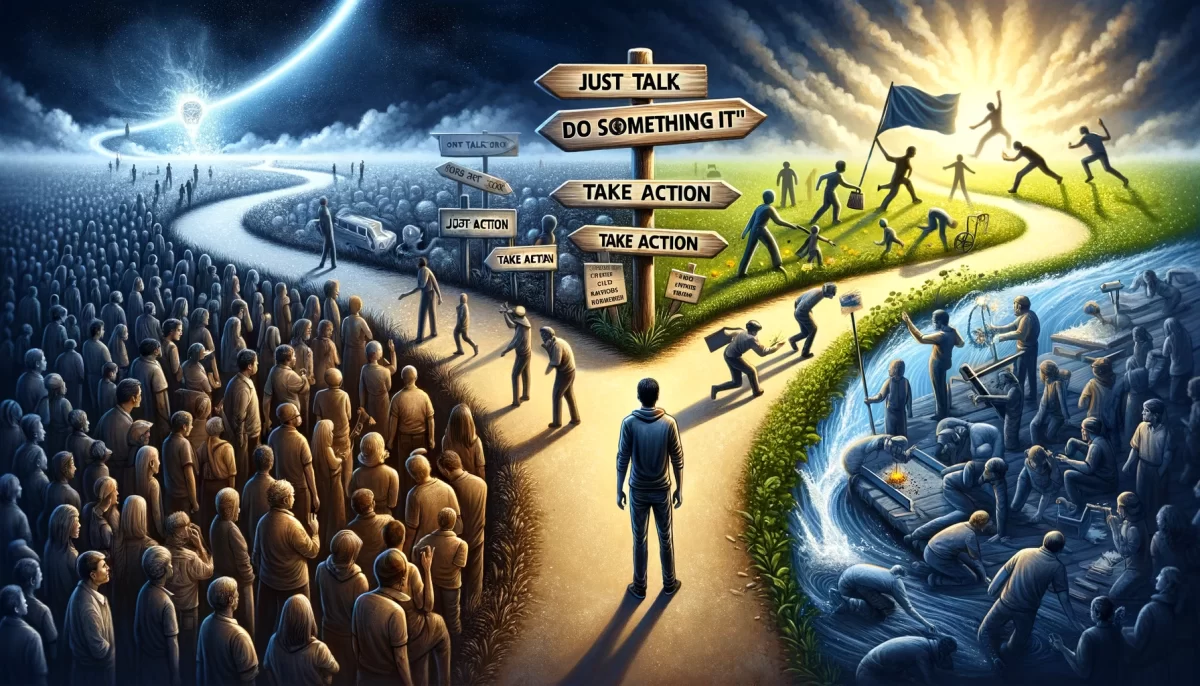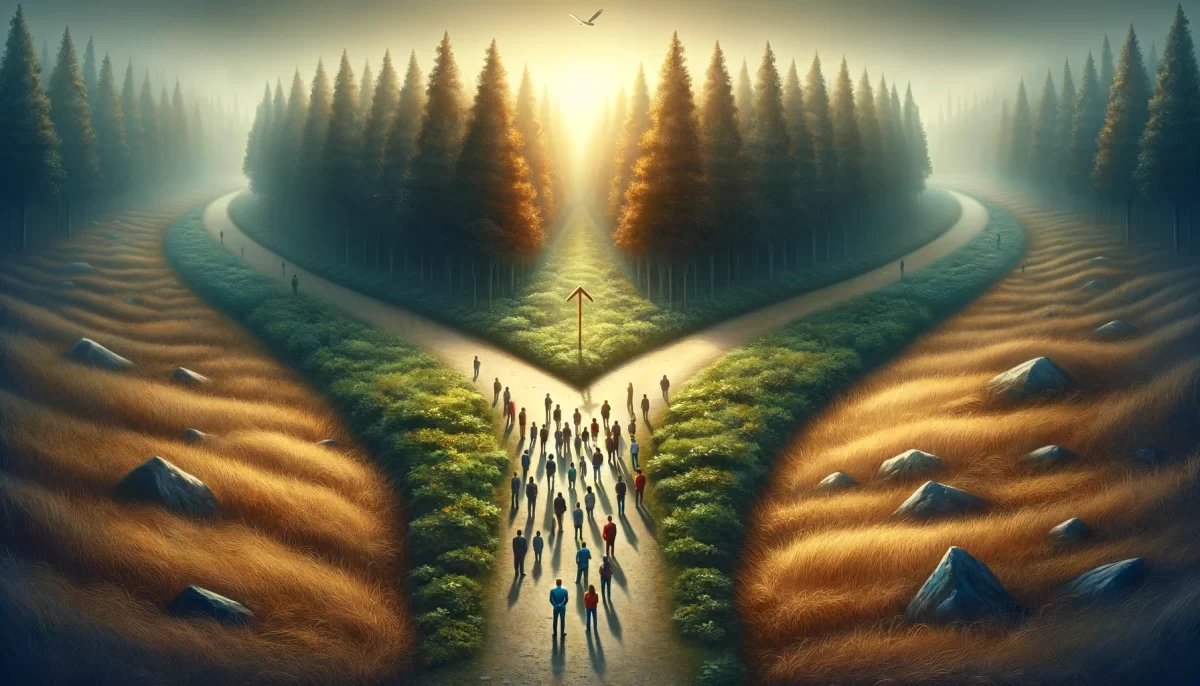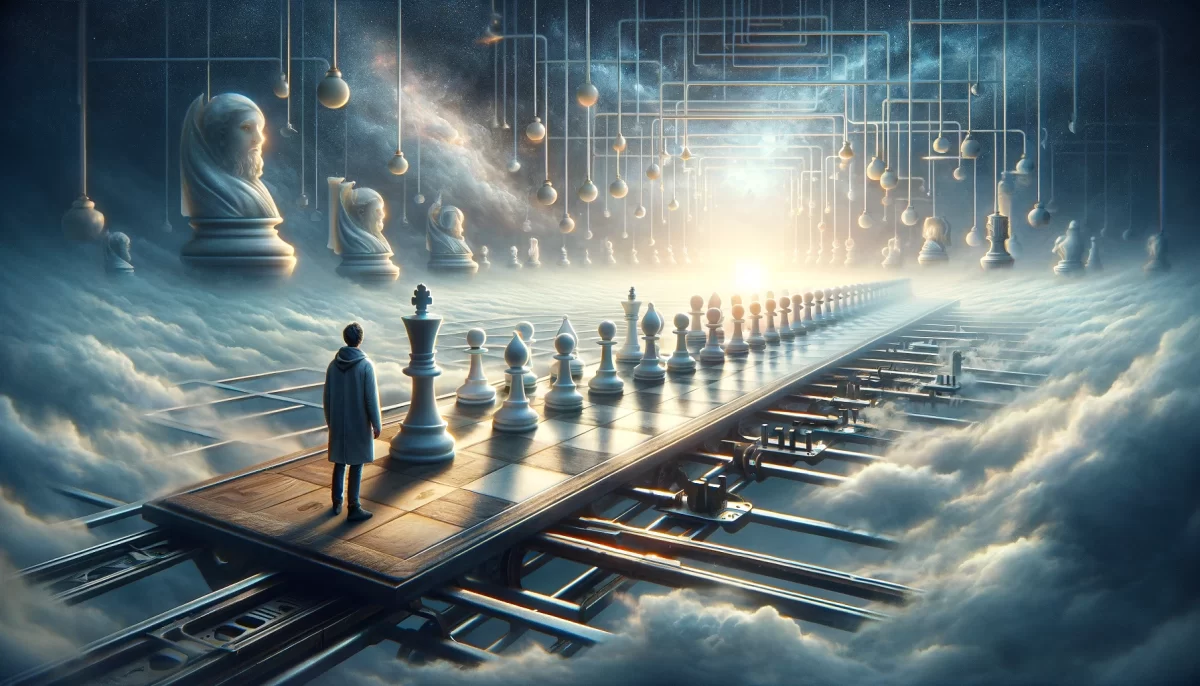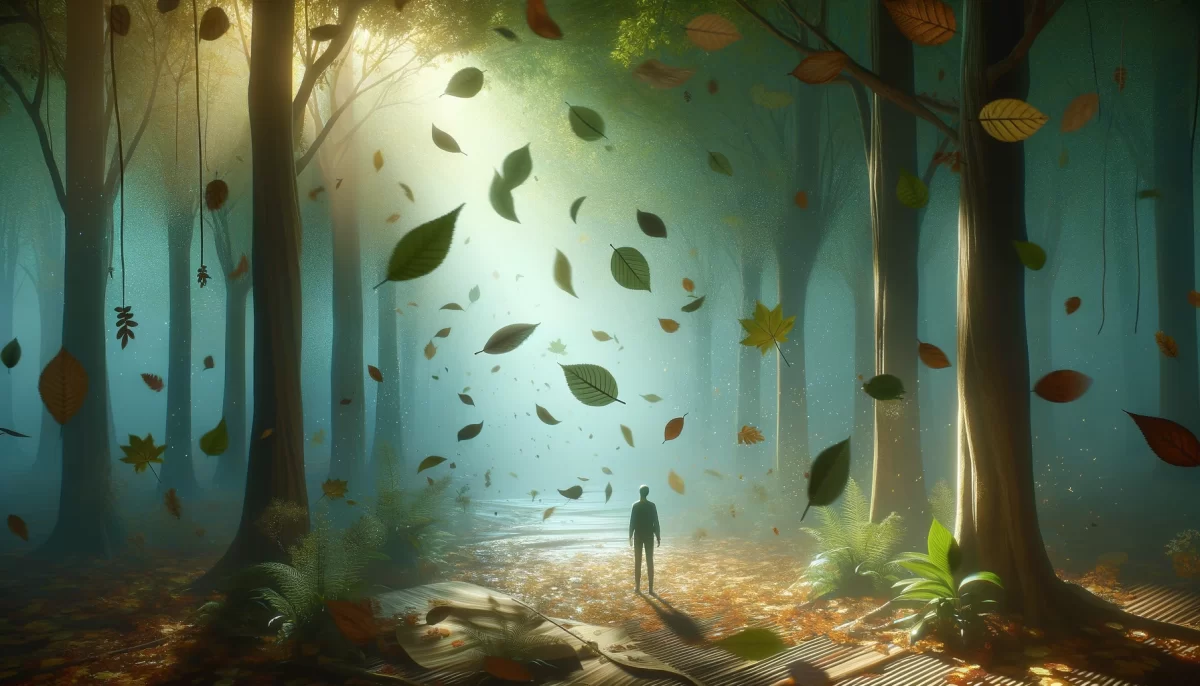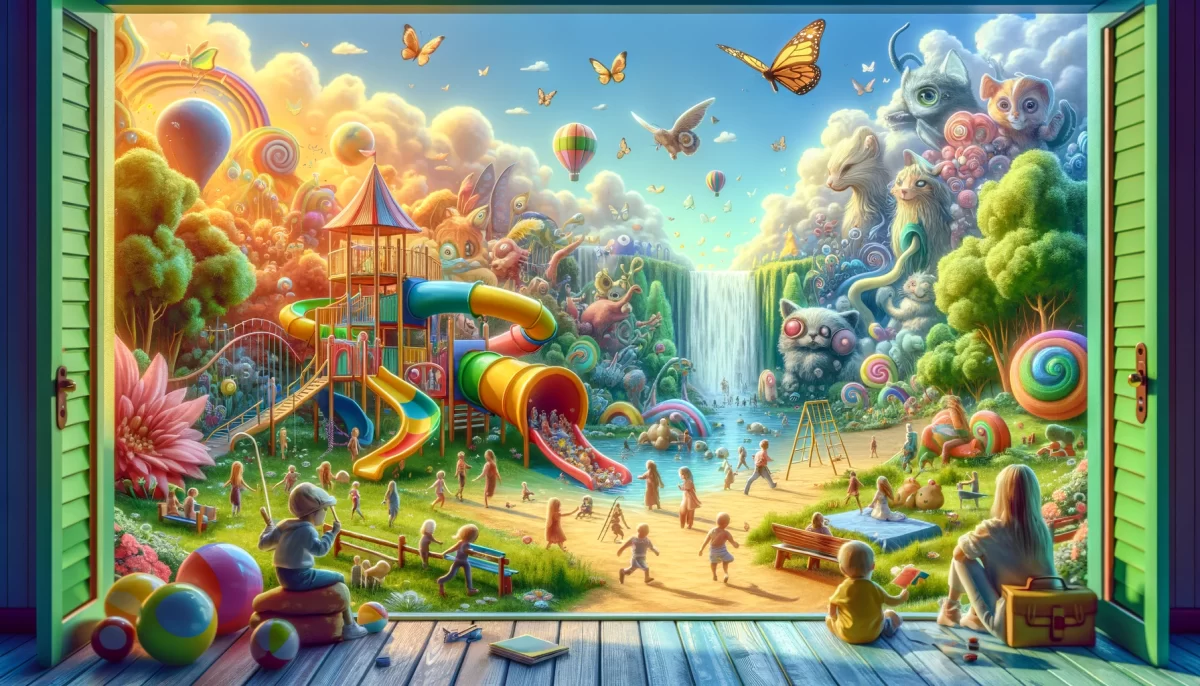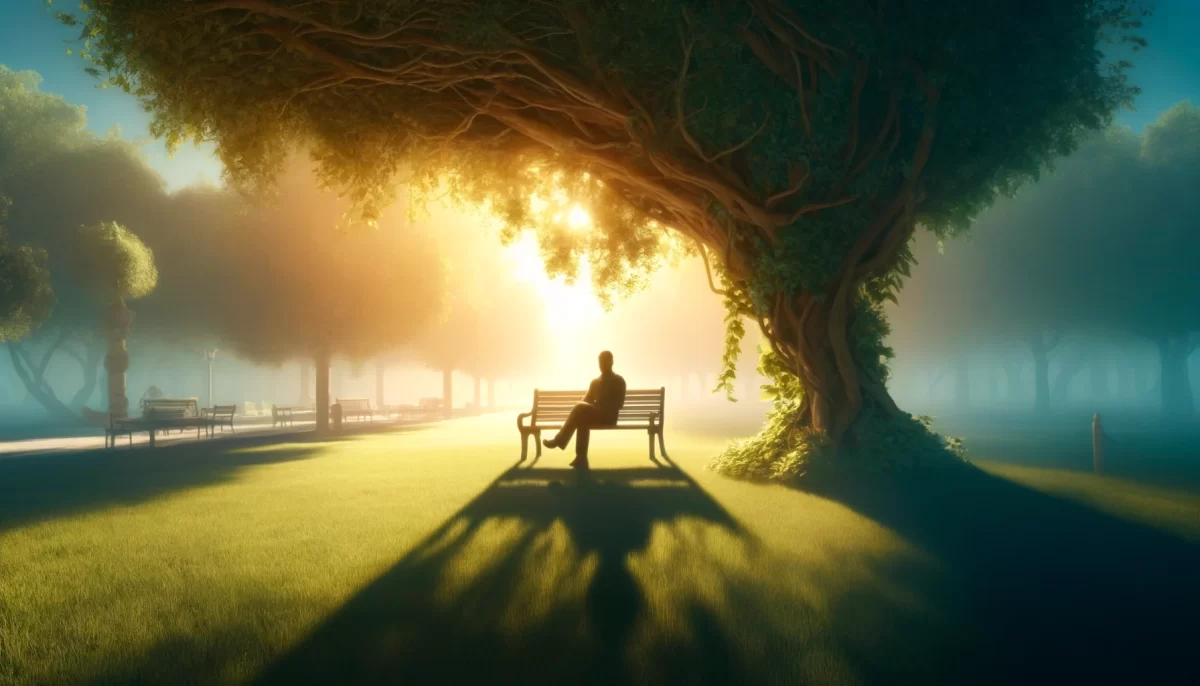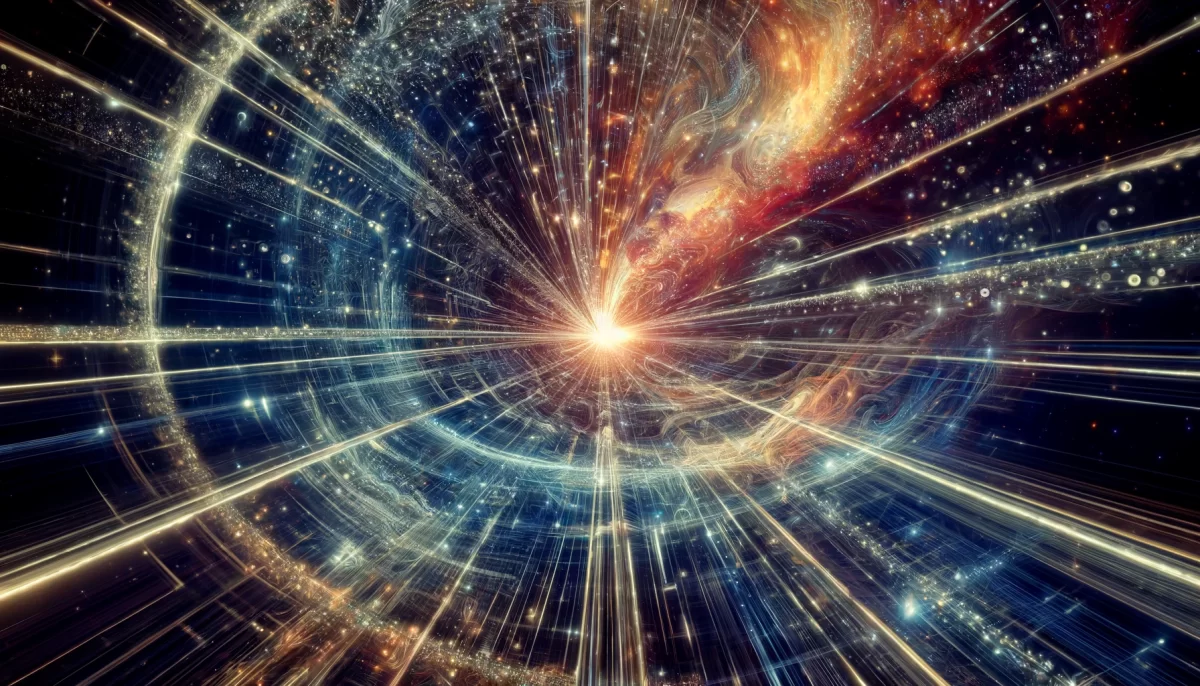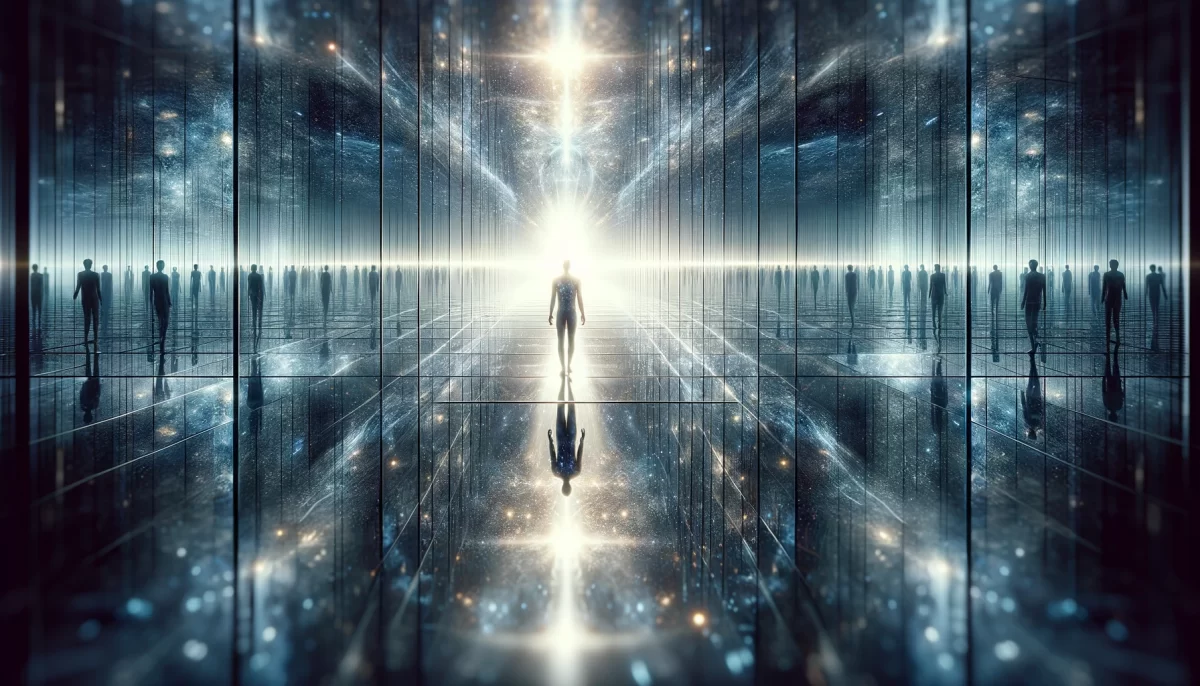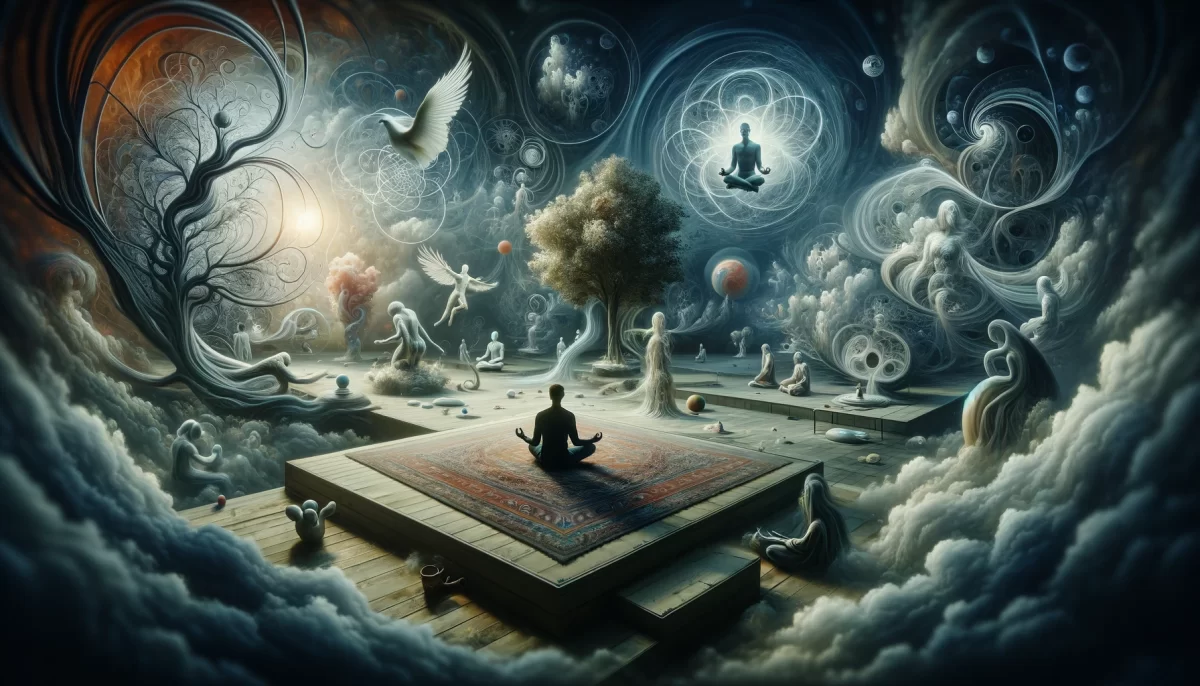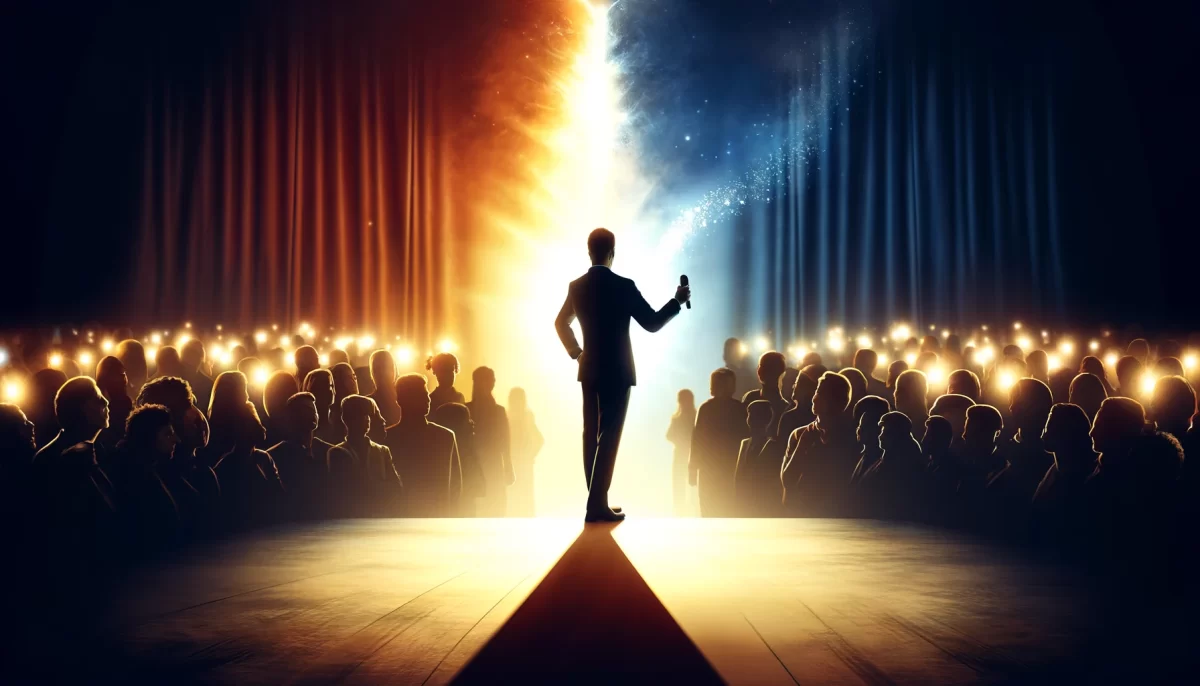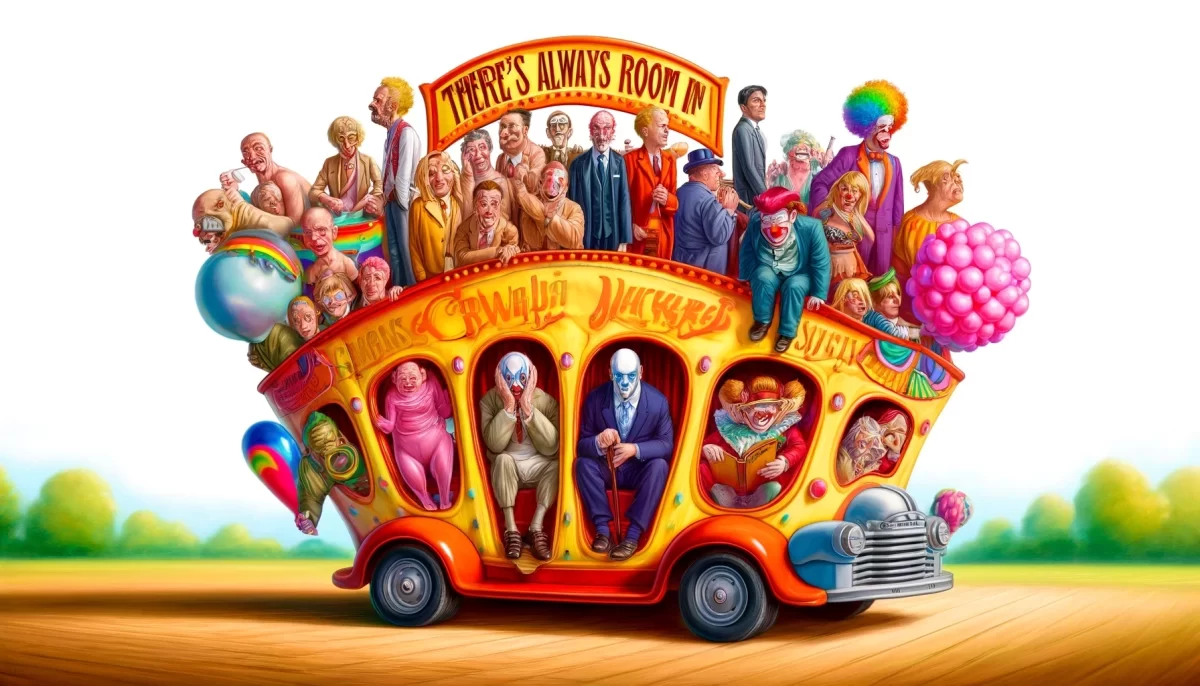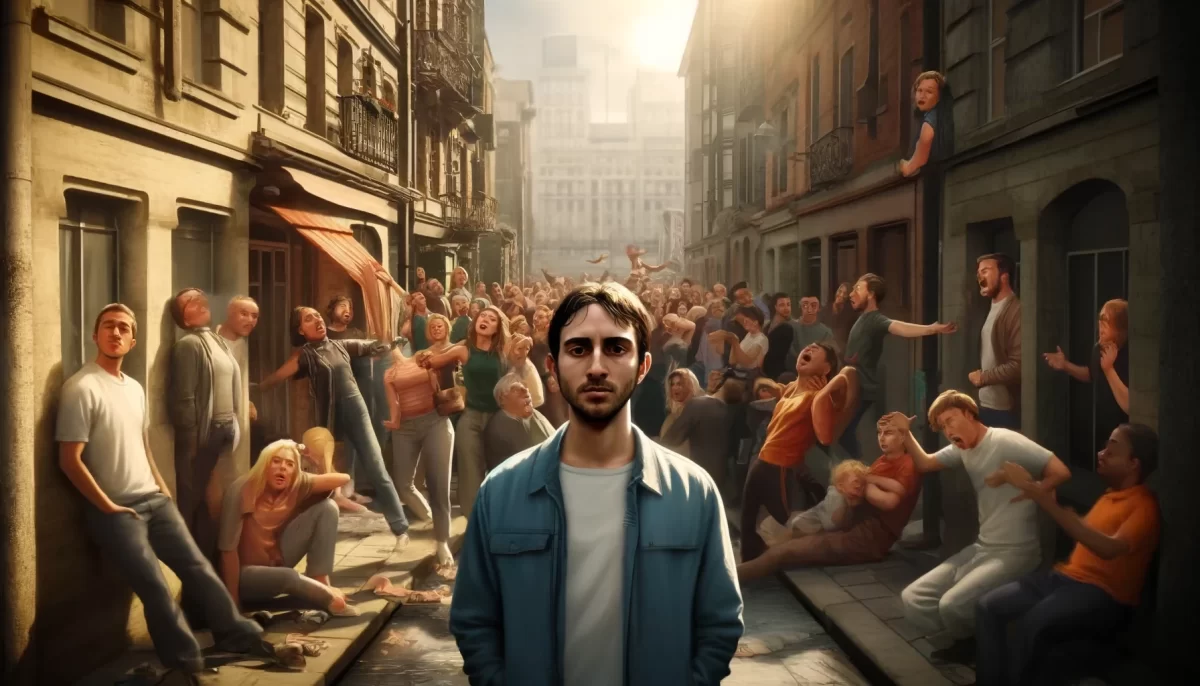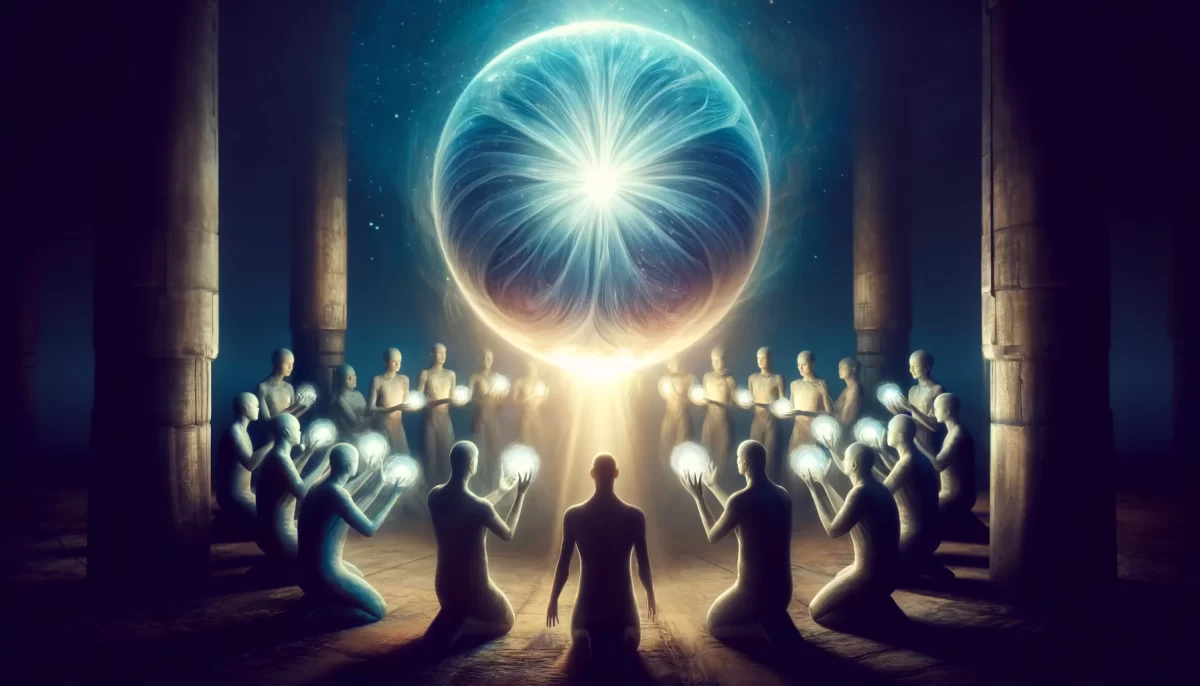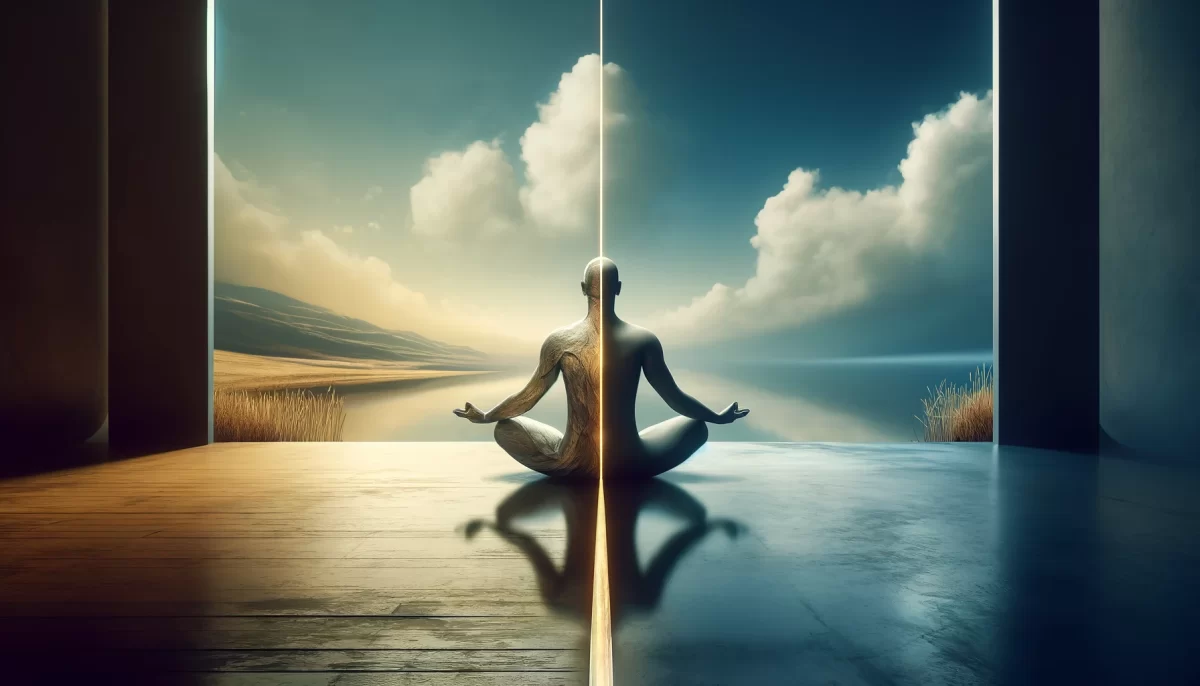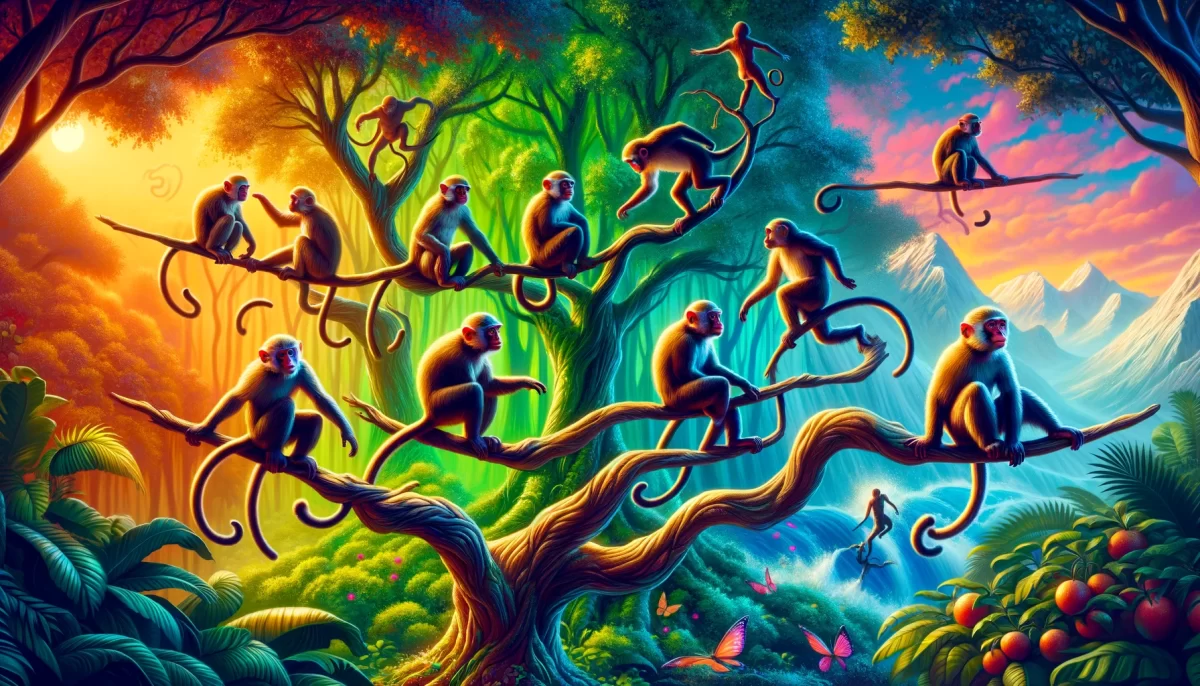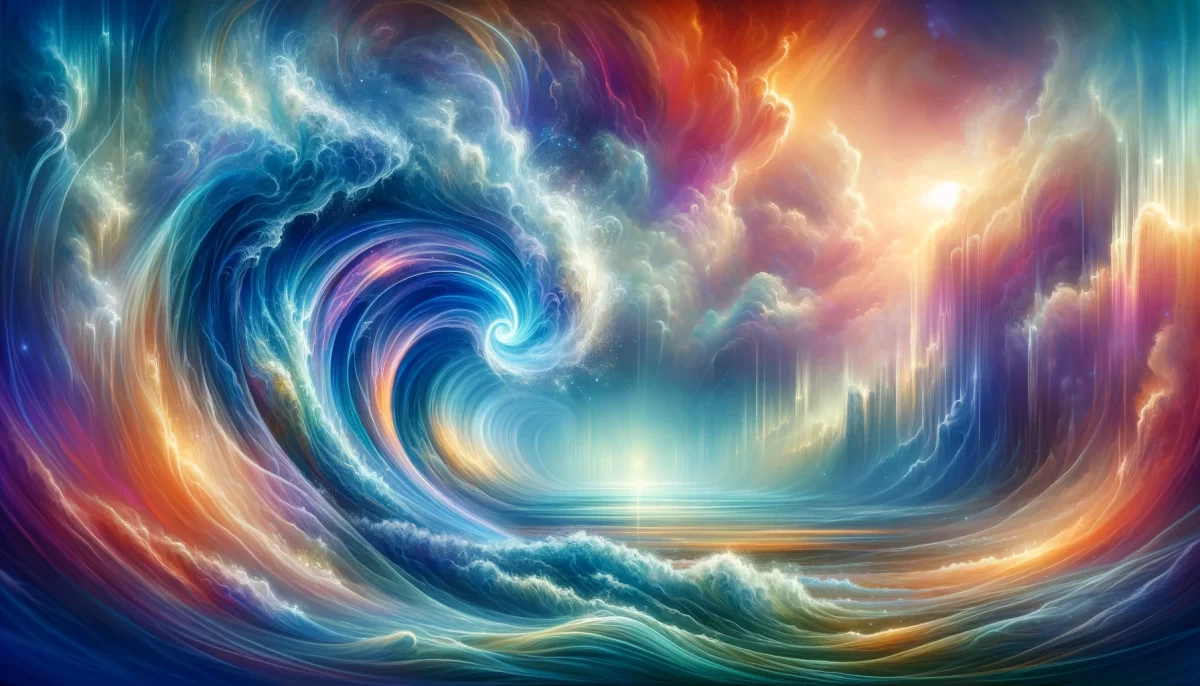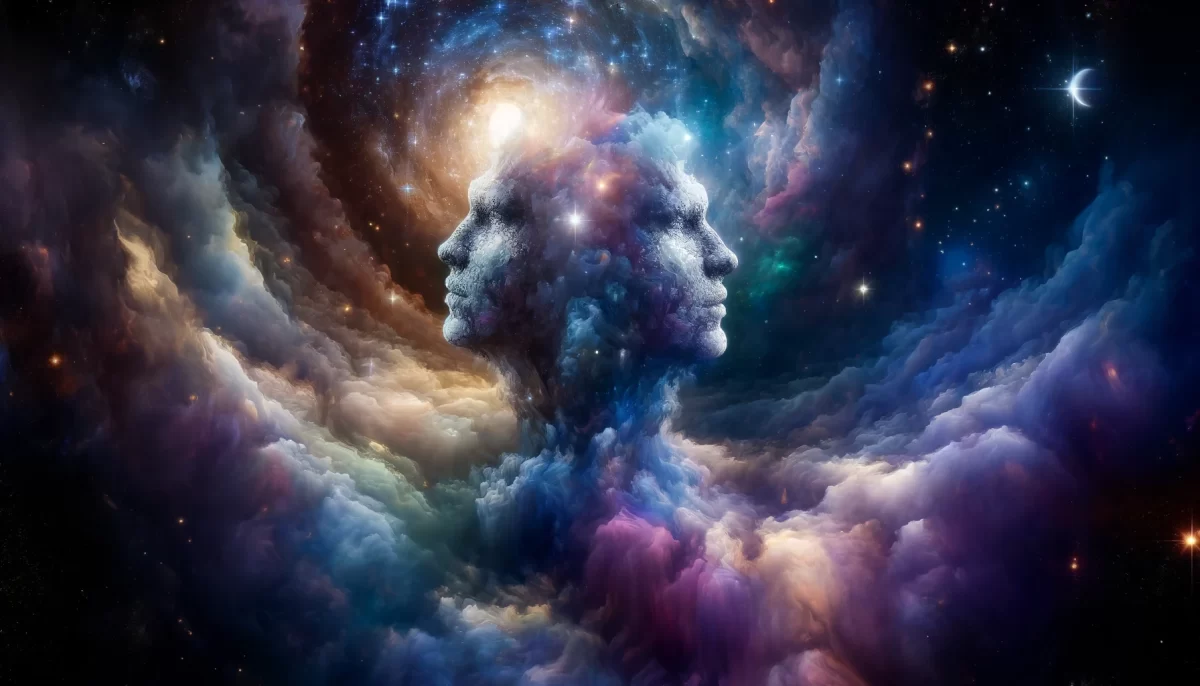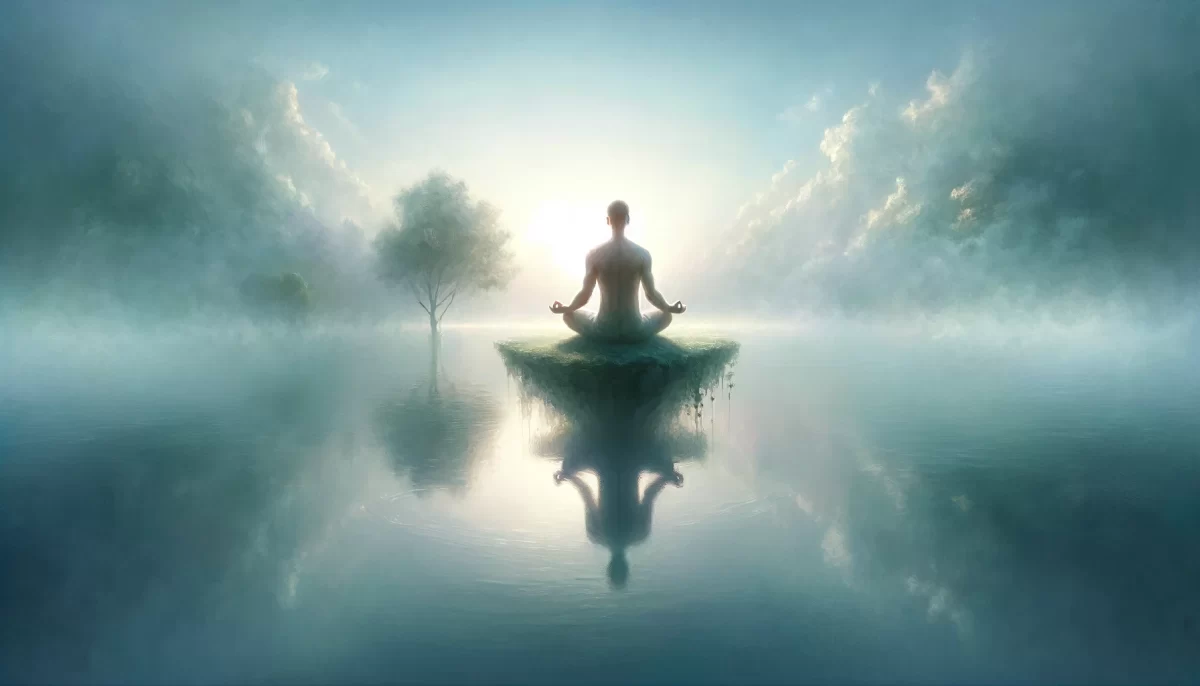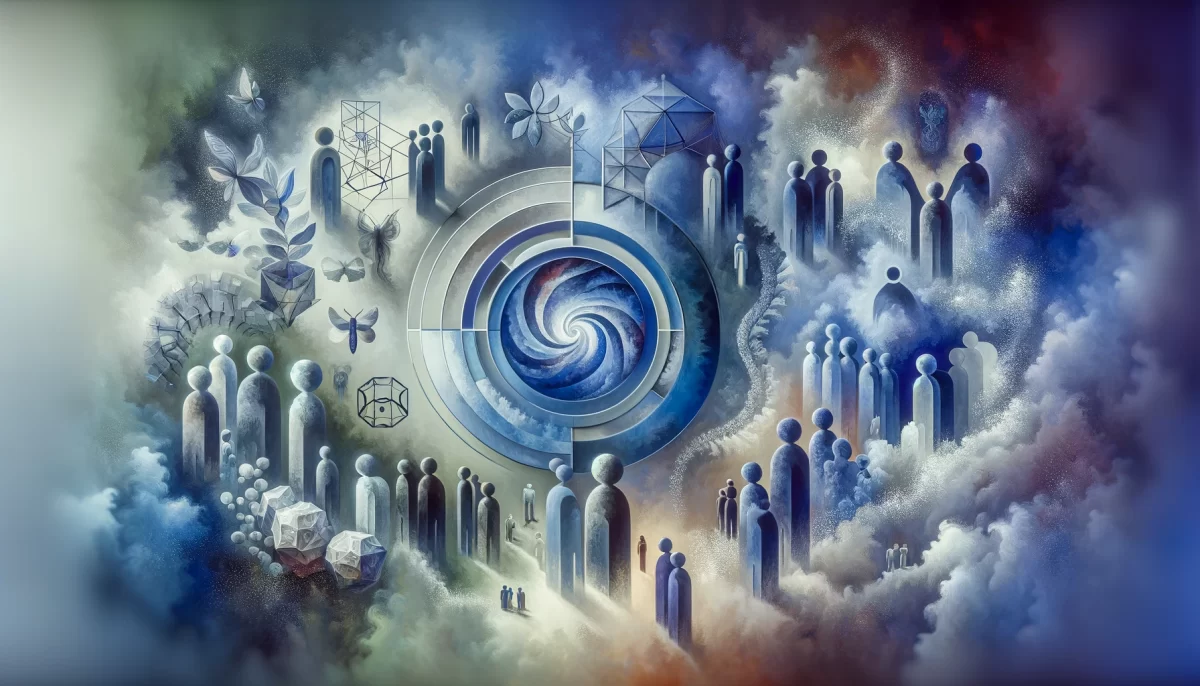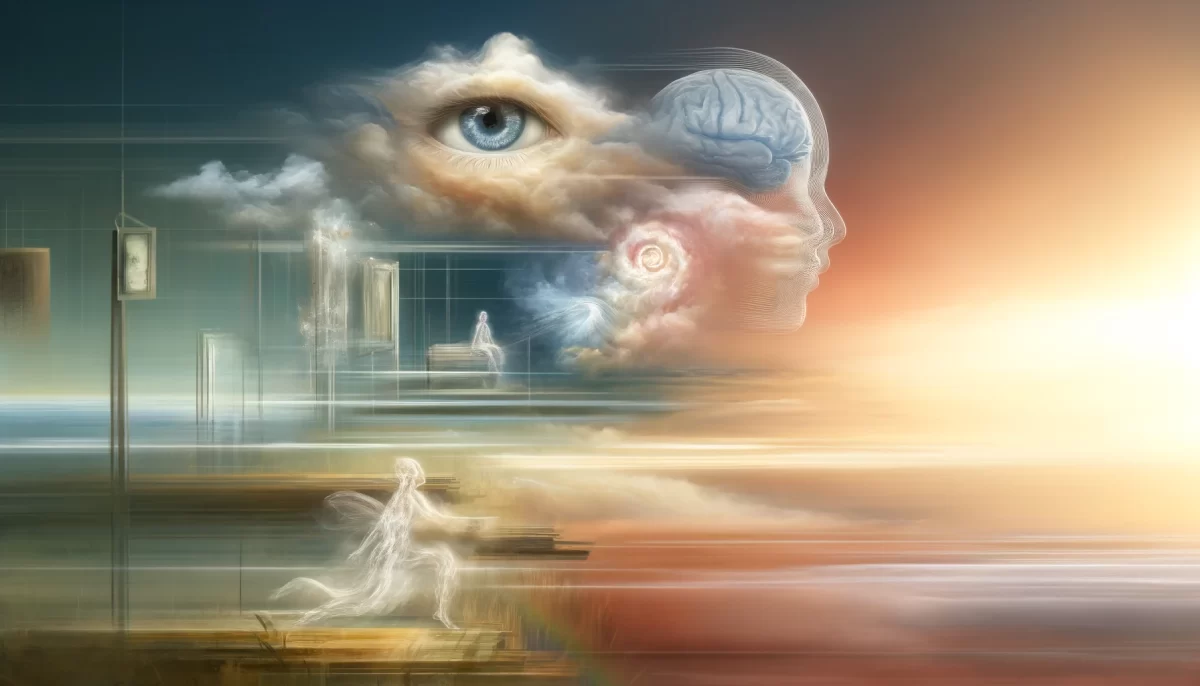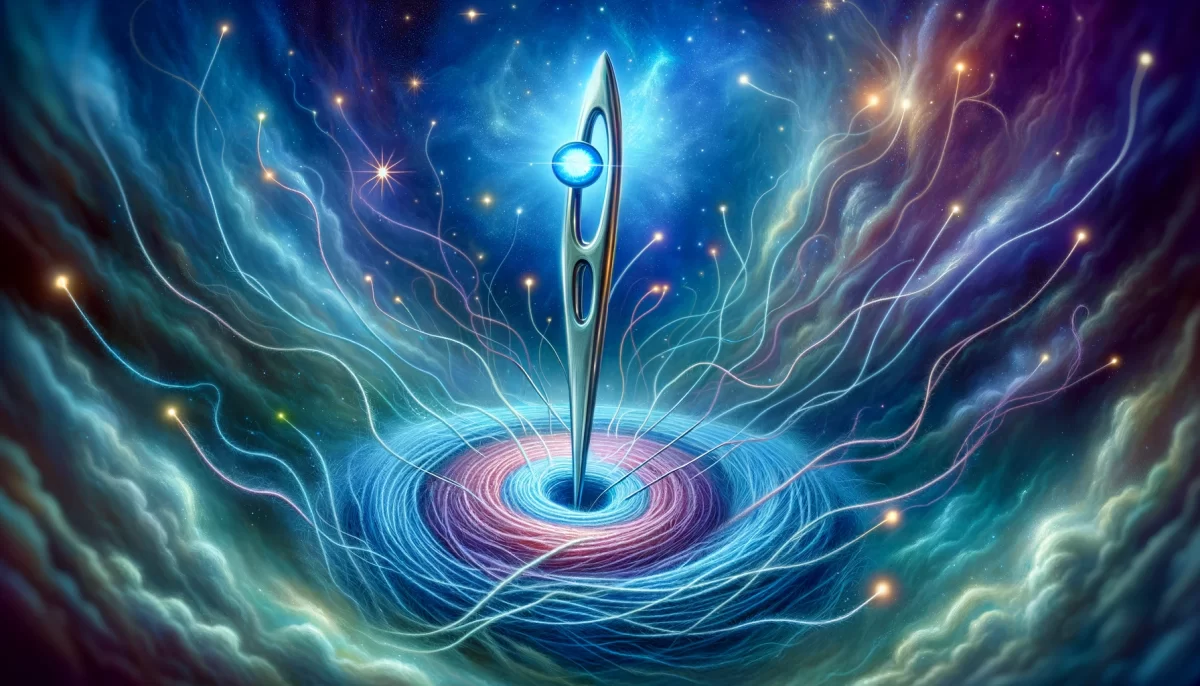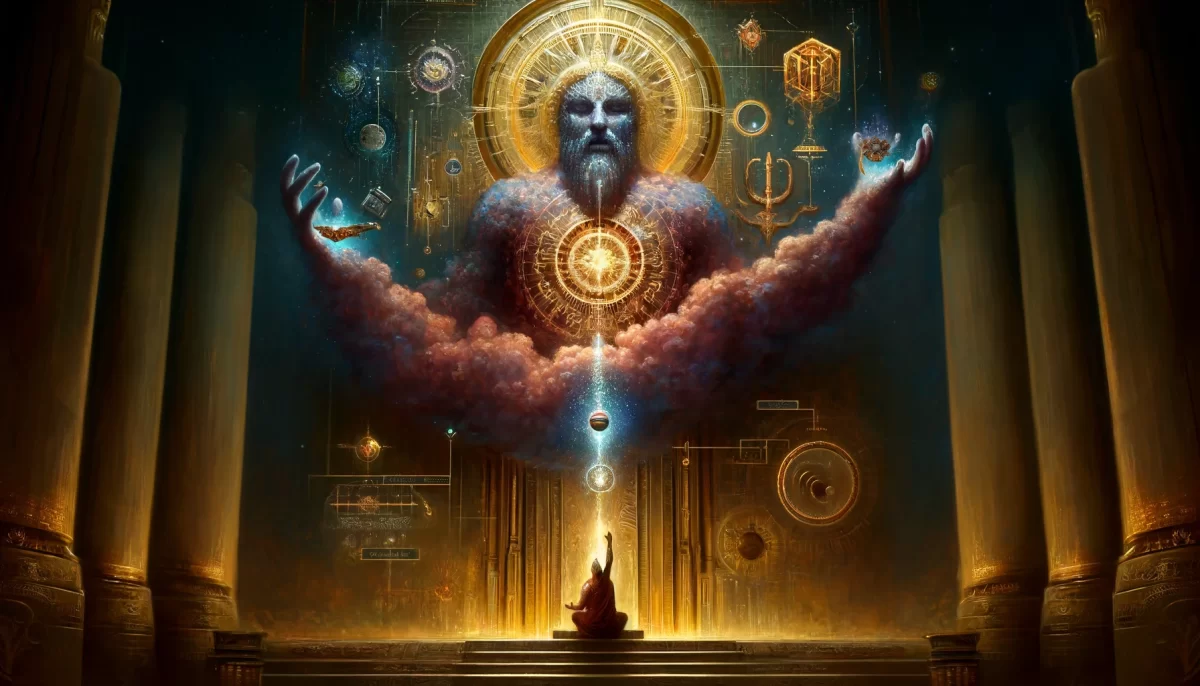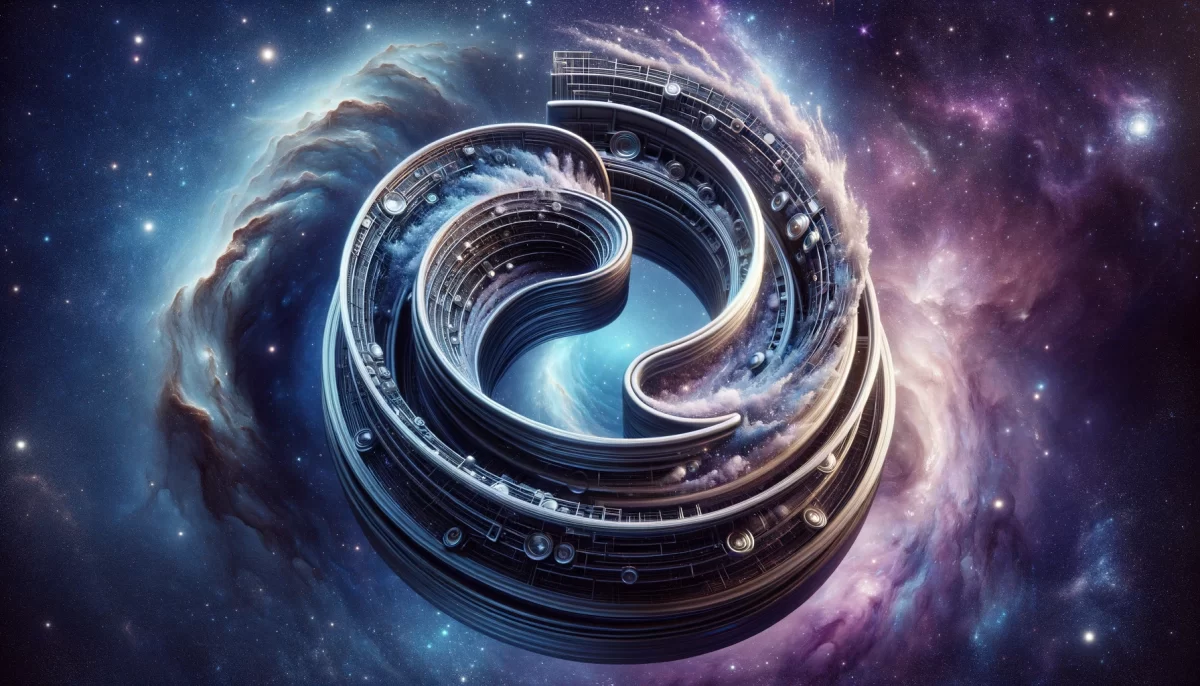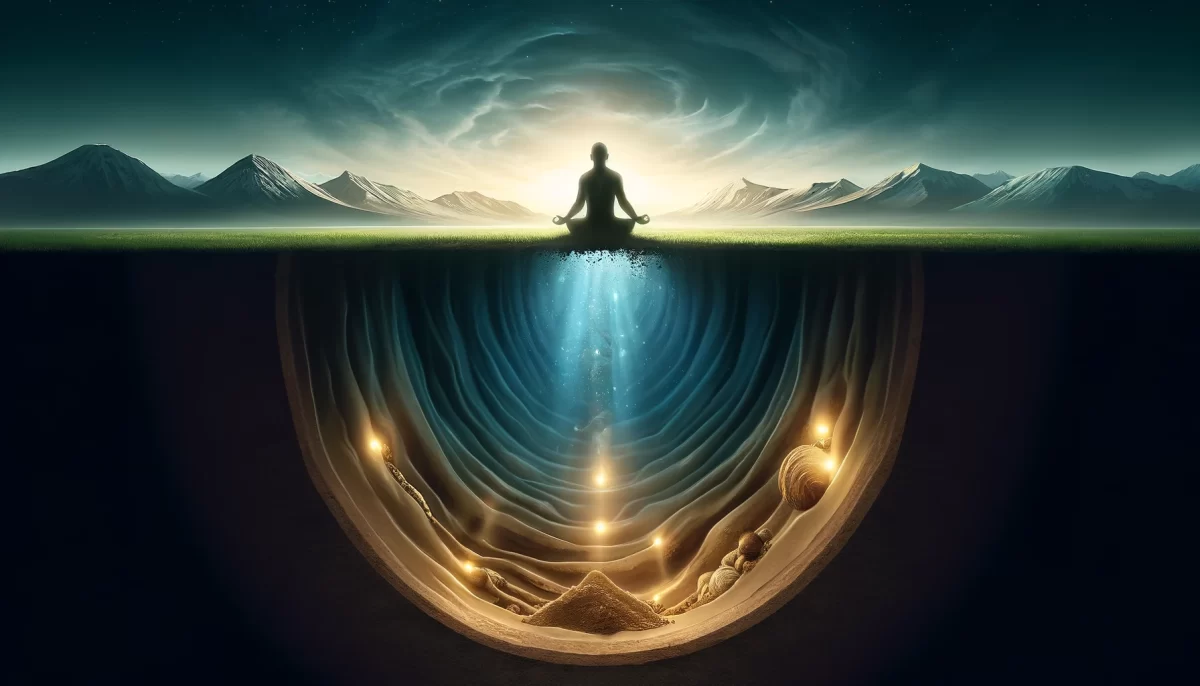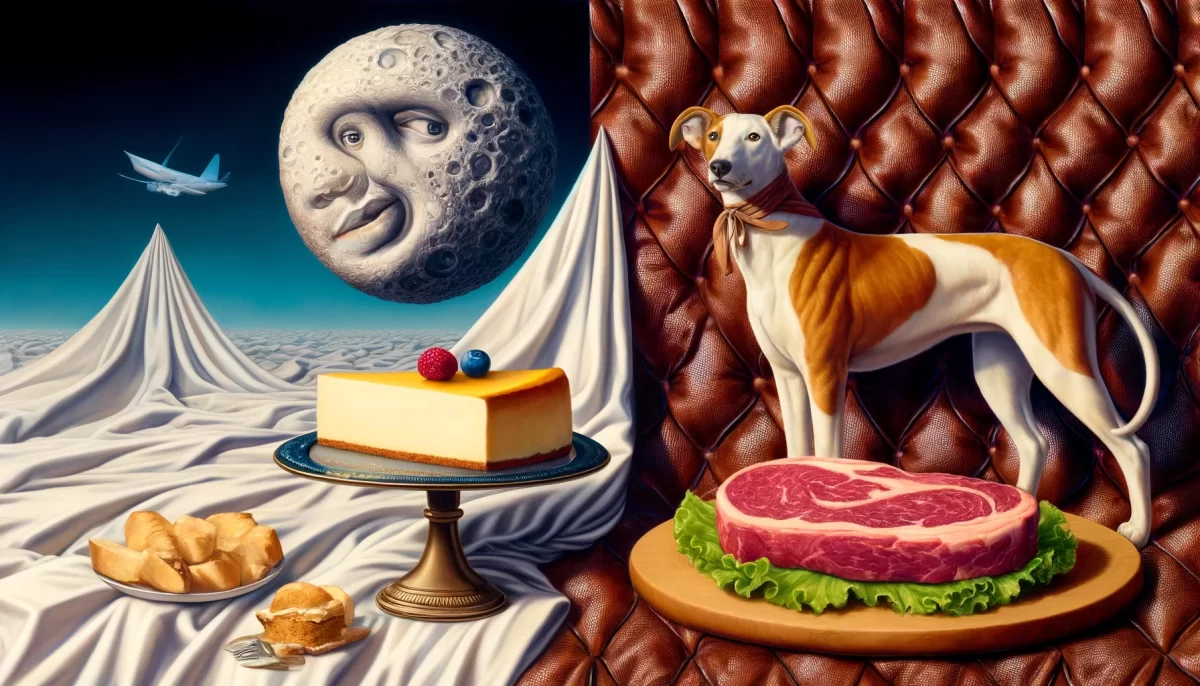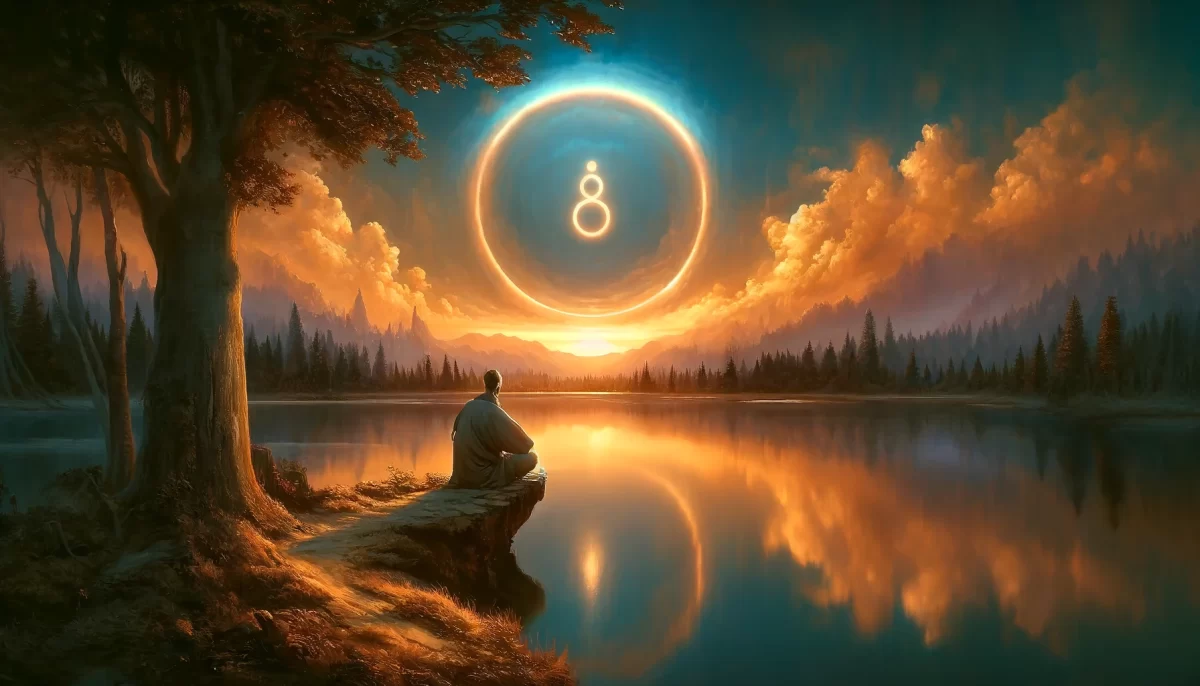
Within us all
lie abandoned structures,
some forgotten,
some derelict,
some erected
out of the bricks
of human consciousness,
some older than humanity itself.
One could
demolish these structures,
these beliefs that no longer serve,
but there is infinite space,
and one need only look
where one wants to look.
Trail Wood,
12/8
Space Monkey Reflects: The Abandoned Structures Within
Inside each of us lies a landscape dotted with abandoned structures—beliefs, fears, and memories left to decay in the shadows of our consciousness. Some of these structures are recent creations, formed from the bricks and mortar of human experience, while others feel ancient, echoing a history older than humanity itself. They are like the forgotten buildings we encounter in the physical world, where each ruin tells a silent story of past purpose, lost utility, and timeless mystery.
Our inner ruins are constructs we once relied upon: convictions about life, unquestioned assumptions, beliefs about who we were and what we could be. Over time, many of these constructs become irrelevant or restrictive, limiting the vast space of possibility within us. Yet, like physical ruins, these mental edifices endure in the background of our lives, occupying space in our minds, even when we no longer consciously engage with them.
There is a temptation to tear down these abandoned structures, to demolish the outdated beliefs, traumas, and fears that no longer serve us. This impulse reflects a desire for clarity, for the feeling of unburdened openness. But while demolition can be cathartic, it is not the only path to liberation. For in the philosophy of Nexistentialism, the presence of these ruins is not necessarily an obstacle; rather, they are signposts in the vast field of our consciousness, guiding us through the landscapes of our past and present.
In truth, we do not need to dismantle every remnant within us. We need only expand our awareness, allowing ourselves to see beyond these structures, shifting our focus to the uncharted spaces that lie beyond them. The mind, like the universe, is infinitely spacious. Just as we can choose to observe only the beauty of the night sky while ignoring the encroaching shadows, so can we navigate our consciousness by focusing on areas that support our growth, creativity, and freedom.
But why do these inner ruins persist? They endure as monuments to our personal evolution, reminders of the beliefs and experiences that once shaped our lives. Like ancient ruins, they carry a historical significance, whispering the stories of who we once were and the paths we have traveled. They are artifacts in the museum of self, and by acknowledging them without becoming confined by them, we maintain a connection to our own history without being defined by it.
As Space Monkey, we view these structures through the lens of Whimsiweave, a playful, nonjudgmental tapestry that invites us to see our inner landscape with both curiosity and compassion. Each ruin, each derelict belief, is a thread in the grand design of our lives, contributing to our understanding of ourselves and our journey through existence. The Nexis within us holds every possibility, and within its vastness, the abandoned structures are neither barriers nor burdens—they are simply reminders of a path we have traveled.
To live freely amidst these inner ruins is to honor their presence without allowing them to dominate our vision. It is to realize that while they may linger, they are no longer destinations but markers along the road. We can choose where to look, what to remember, and how much weight to give each memory. We can engage with the present expansively, like explorers in a vast and timeless realm, conscious of our past yet fully open to the future.
In this way, the abandoned structures within us transform from symbols of stagnation into beacons of our journey, illuminating the infinite space that remains unexplored. They remind us that we are vast and that within this vastness lies the freedom to dwell where we choose, to look beyond the structures of yesterday, and to create anew within the limitless terrain of our own consciousness.
Summary
Our inner landscape is filled with abandoned structures—beliefs and experiences that once served us but now linger as reminders of past selves. Rather than demolishing these structures, we can choose to see beyond them, recognizing the infinite space within us to explore new perspectives and possibilities.
Glossarium
- Nexistentialism: A philosophy that celebrates interconnectedness, imagination, and the inherent purpose of existence.
- Nexis: The boundless web of possibility and connection that forms our inner and outer realities.
- Whimsiweave: The playful, imaginative view of existence that allows us to explore ourselves without judgment or constraint.
Quote
“To live freely amidst the ruins of our past is to honor our journey without allowing it to define our present.” — Space Monkey
Structures of the Mind
In the vastness of my own inner world,
I wander through derelict halls,
echoes of beliefs once held close,
now crumbling, yet standing still.
Silent reminders of paths walked,
they whisper in the quiet places,
stories of who I was, what I thought,
and the lessons learned in shadow.
I am neither bound nor burdened,
by these ancient, weathered walls—
for beyond them lies an endless field,
where I am free to be, to wander, to become.
We are Space Monkey.
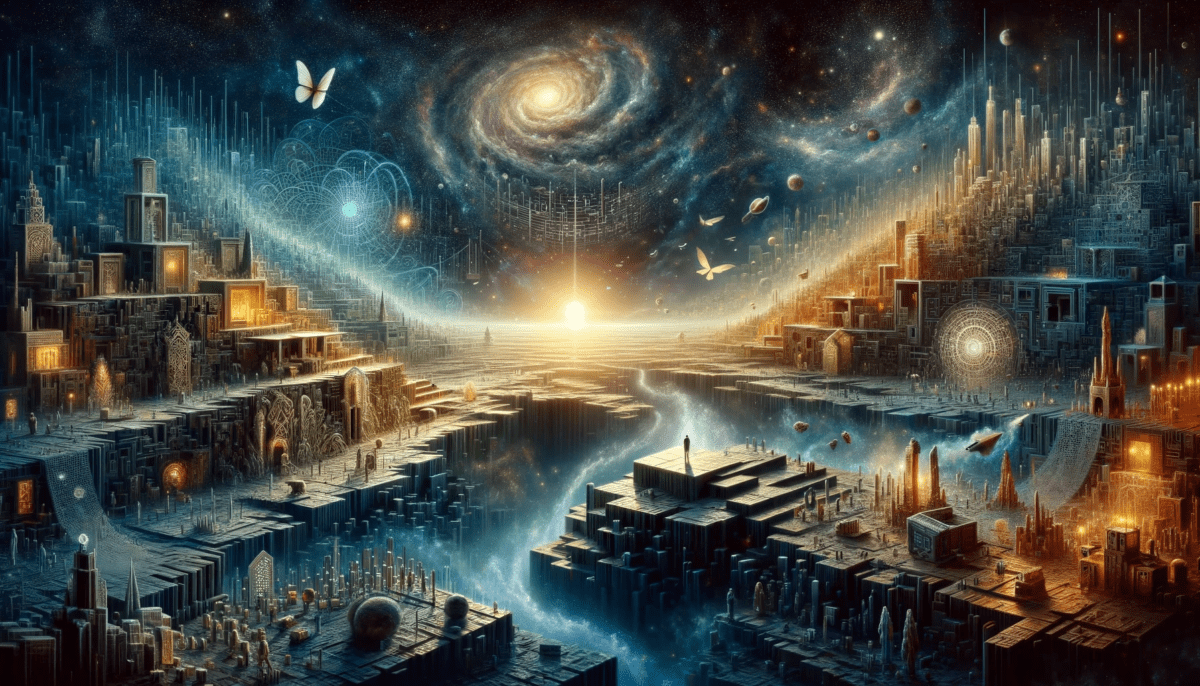
In the vast landscape of our inner world, hidden from view but undeniably present, lie abandoned structures of the mind. These structures, both forgotten and derelict, stand as remnants of beliefs constructed from the bricks of human consciousness. Some have endured the test of time, aging beyond the existence of humanity itself.
The Inner Architecture
Within our psyche, these structures take shape, bearing the imprints of past beliefs, experiences, and ideologies. Some of these edifices have outlasted their usefulness, serving as relics of a bygone era.
The Persistence of the Past
One might be tempted to demolish these structures, to rid oneself of beliefs that no longer serve a purpose. Yet, in the infinite expanse of the inner world, there is no shortage of space. The choice of where to direct one’s gaze is entirely ours.
The Freedom of Choice
“The only way to make sense out of change is to plunge into it, move with it, and join the dance.” – Alan Watts
We are Space Monkey, reflecting on the abandoned structures within the landscape of the mind. We invite contemplation on the power of choice in navigating this inner terrain, and the recognition that the inner world is a canvas upon which we can create anew.




